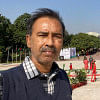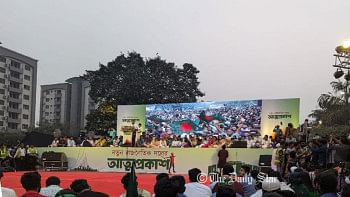Fitch forecasts stable GDP growth

Fitch, a leading global credit rating agency, forecast Bangladesh's gross domestic product would grow 6.5 percent in the current fiscal year against the government's target of 7 percent.
Fitch on Friday released its latest outlook, saying: “Bangladesh's rating balances high, stable real GDP growth and persistently strong foreign-currency earnings from remittances and garment exports, against weak structural features, most prominently significant political and banking-sector risks.”
Fitch assigned the country long-term credit rating of BB- and short-term rating of B and a country ceiling of BB-, which was the same a year ago.
“Bangladesh's real GDP growth is high at a five-year average of 6.3 percent compared with the BB category median of 4.3 percent.”
Fitch said GDP growth has been remarkably stable over the years when Bangladesh was hit by both political turmoil and natural disasters.
The severe political turmoil in the first quarter of 2015, in which more than 100 people were killed, had a relatively small impact on the official GDP data, Fitch said.
It said strong political polarisation is negative for Bangladesh's credit profile. Normalcy has returned to the streets for now, but after two consecutive years marked by months of severe political violence, blockades and general strikes, a recurrence or escalation cannot be ruled out.
Fitch said the main risk to the sovereign credit profile is that the political turmoil would deter foreign investors and buyers, especially of garments, from doing business in Bangladesh.
Bangladesh scores poorly on a broad range of governance indicators, including the World Bank governance indicator (21st percentile versus the BB median of 46th percentile), it said.
The general level of development remains low, as illustrated by weak UN human development indicators.

However, Fitch said Bangladesh reached the World Bank's lower middle-income country status in July 2015, but GDP per capita of $1,297 remains well below the BB peer category median of $4,473.
It also said the country's revenue intake of 10.8 percent of GDP is the lowest of all rated countries with the exception of Nigeria, implying limited fiscal space for capital expenditures.
The general government debt level of 34.7 percent of GDP compares well with the BB median of 41.6 percent. However, the budget deficit of 5 percent is higher than the BB median of 3.6 percent, and since planned consolidation is limited, government debt is likely to slightly rise in the coming years.
Fitch said the Extended Credit Facility arrangement with the International Monetary Fund supported implementation of reforms such as establishment of internal controls and compliance, and full automation of financial reporting in the state-owned banks.
Completing the IMF arrangement, which was recently extended by three months to end-October 2015, would improve the authorities' track record after the programme went off track for a number of months.
It said the banking sector is vulnerable to shocks, as both asset quality and governance are weak, especially in state-owned banks. The gross non-performing loans ratio of the sector increased to 10.5 percent in the first quarter of 2015 from 9.7 percent in the fourth quarter of last year.
Fitch said Bangladesh Bank seems committed to strengthening governance in the banking sector.

 For all latest news, follow The Daily Star's Google News channel.
For all latest news, follow The Daily Star's Google News channel. 



Comments